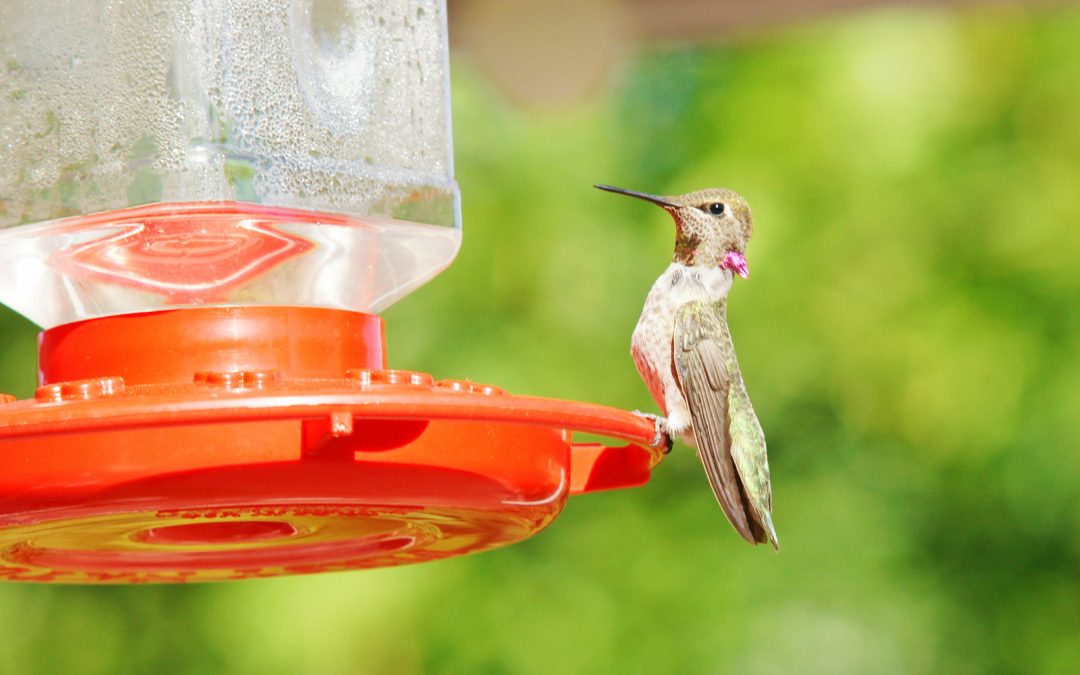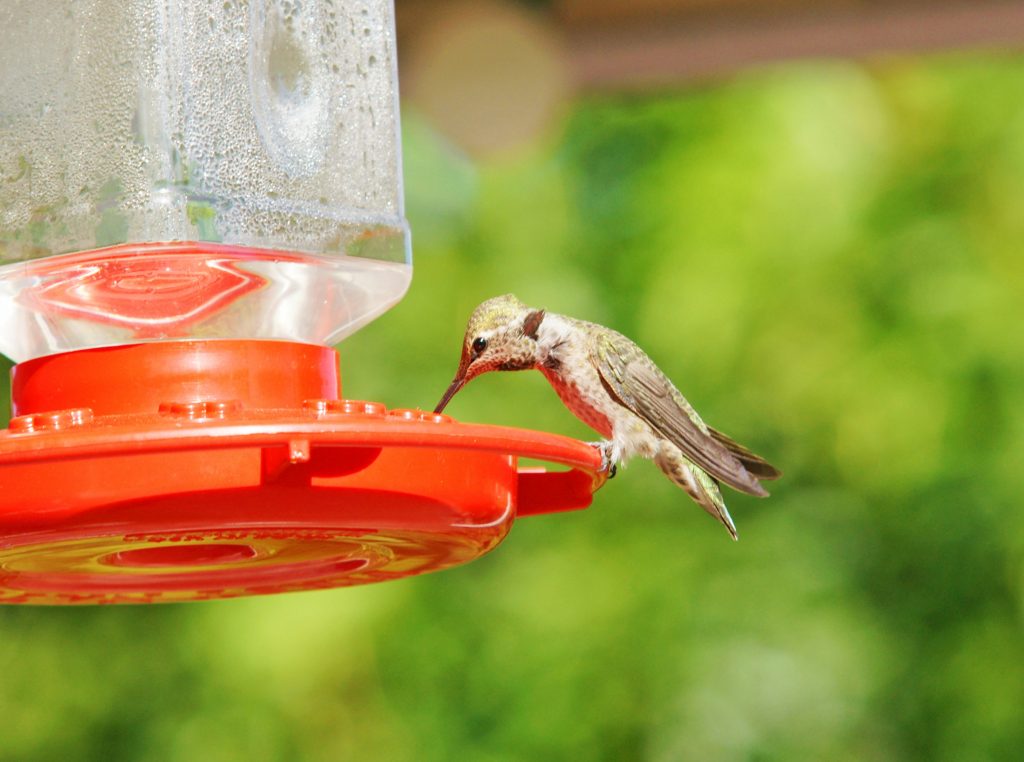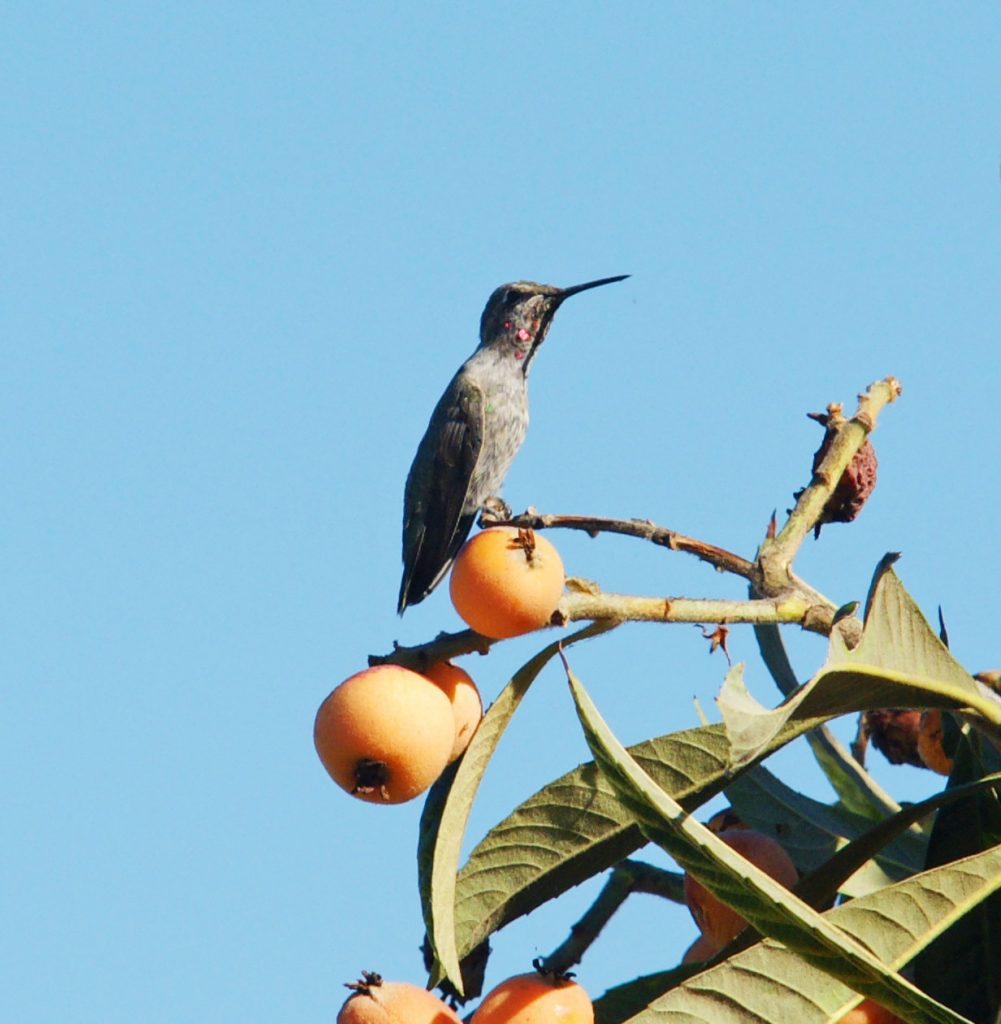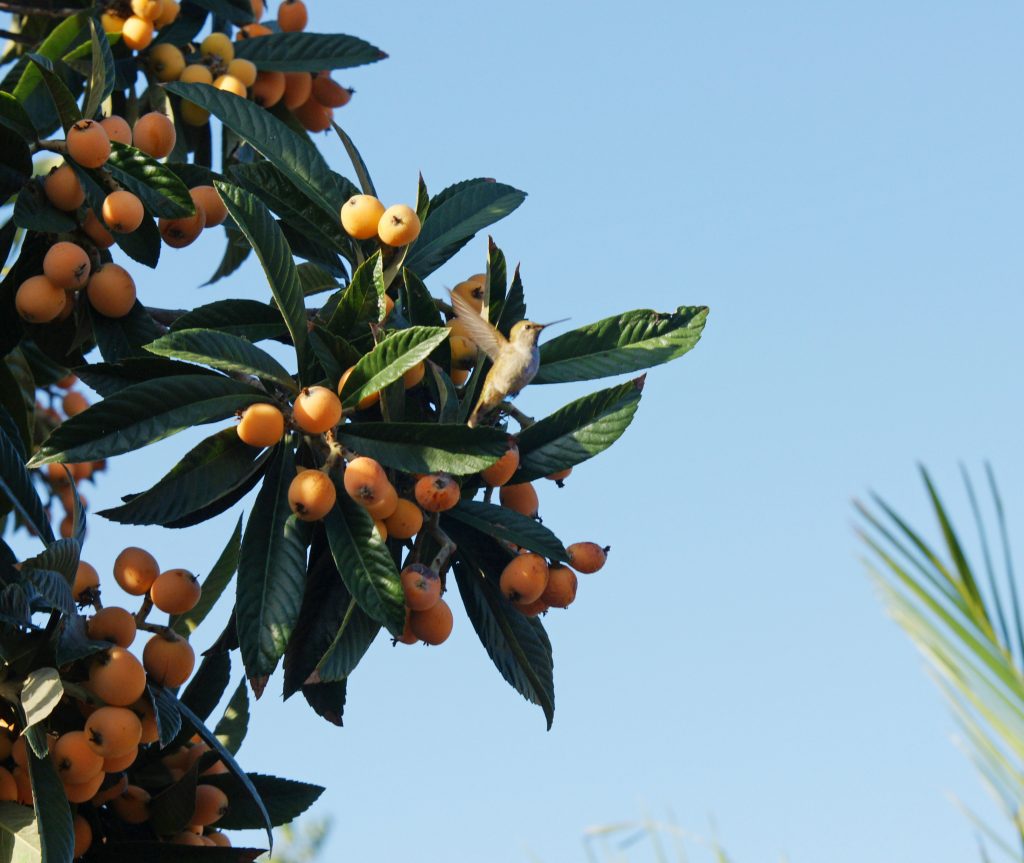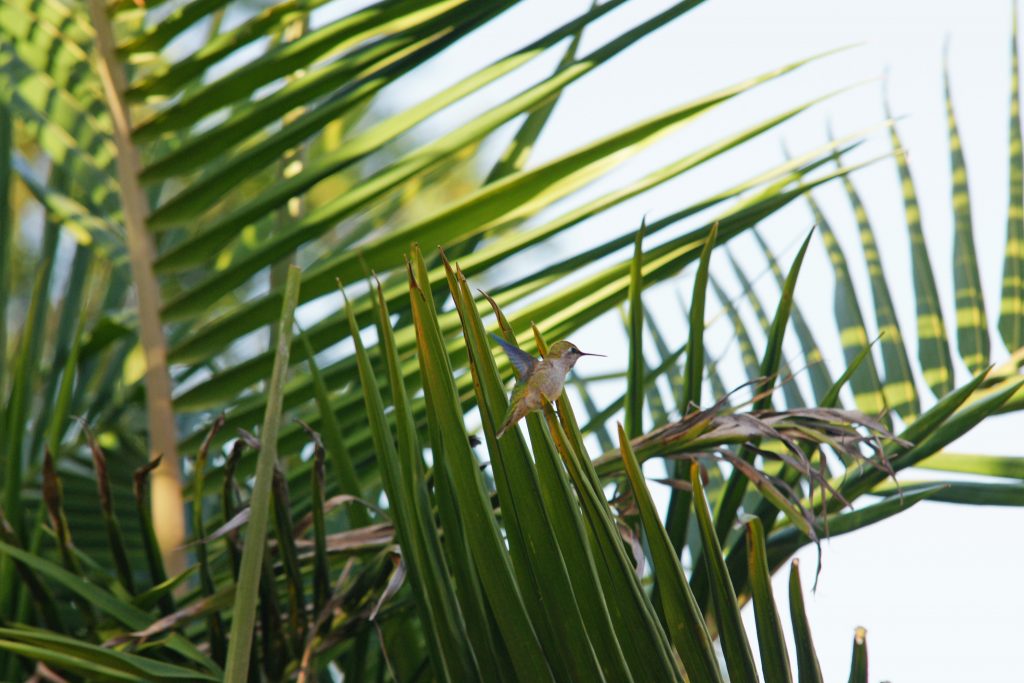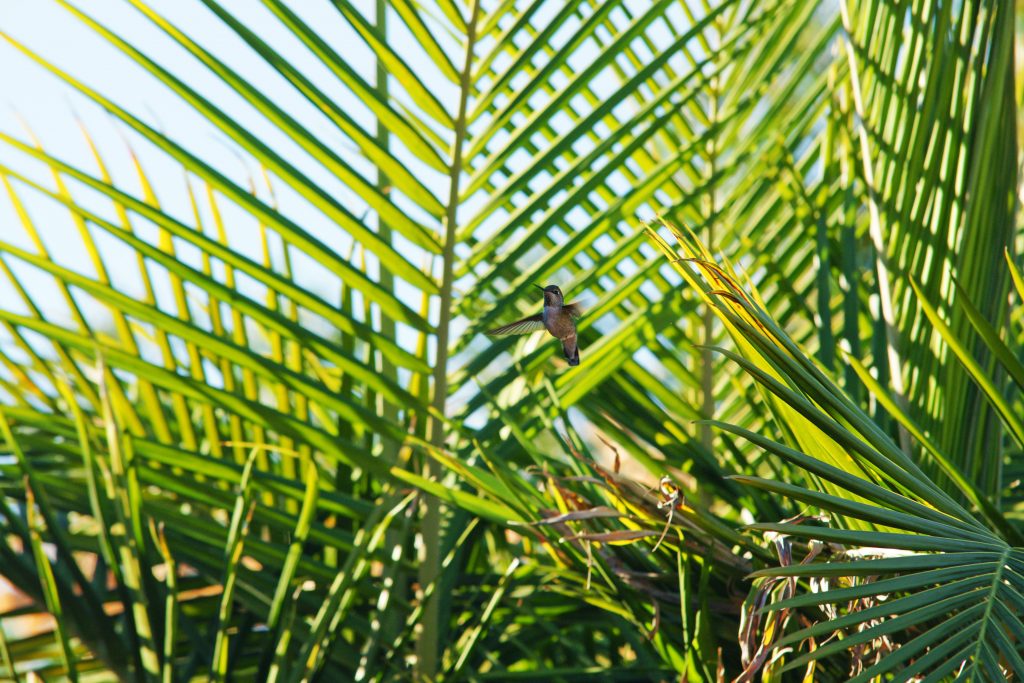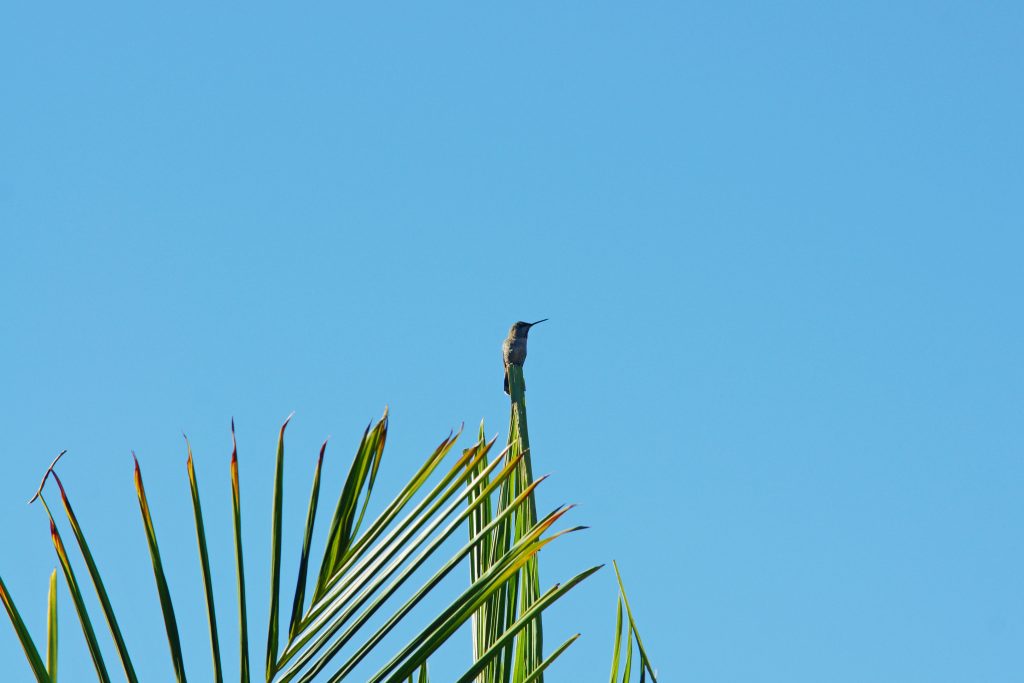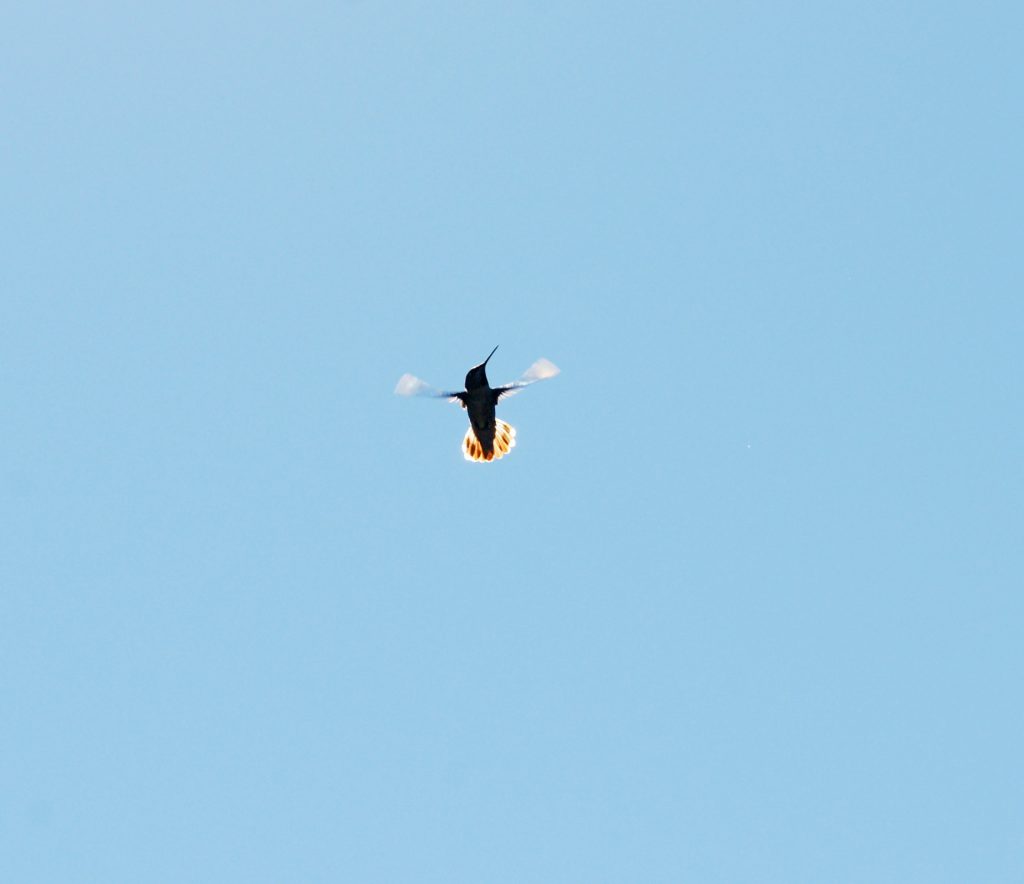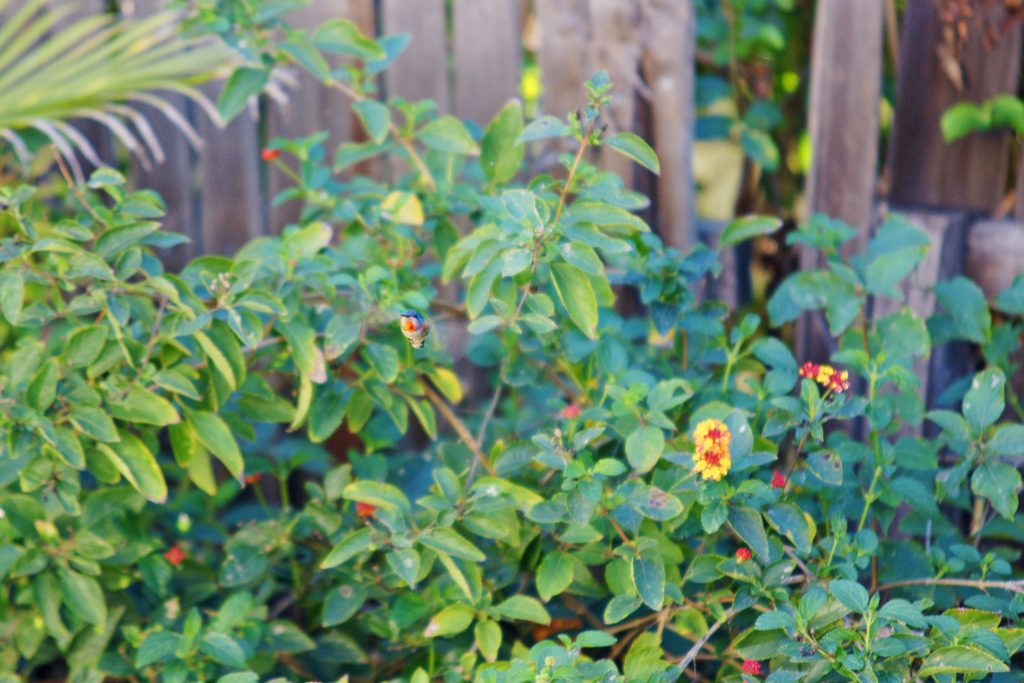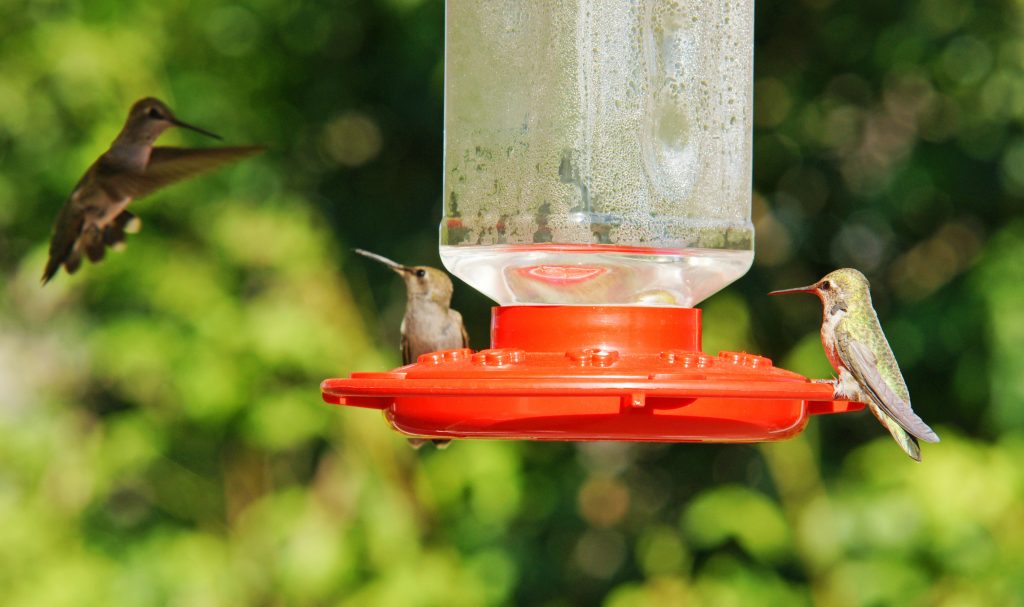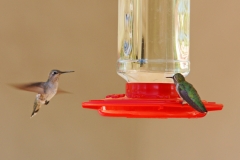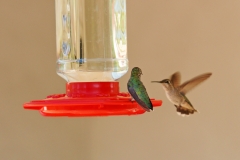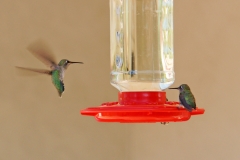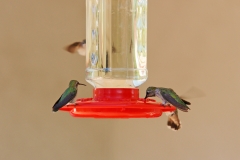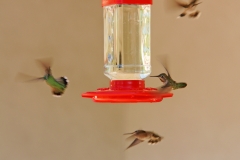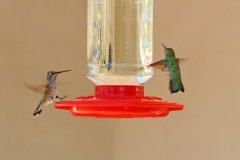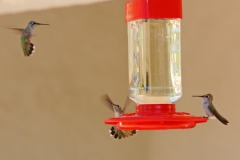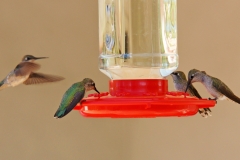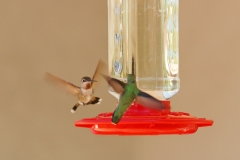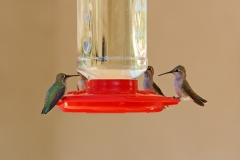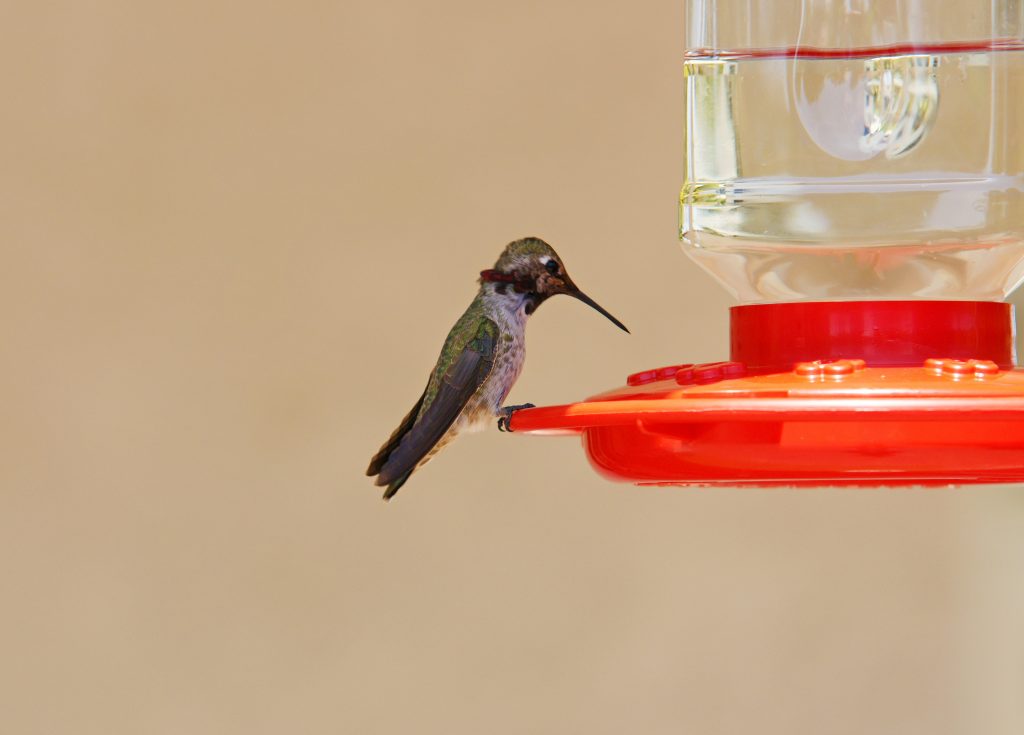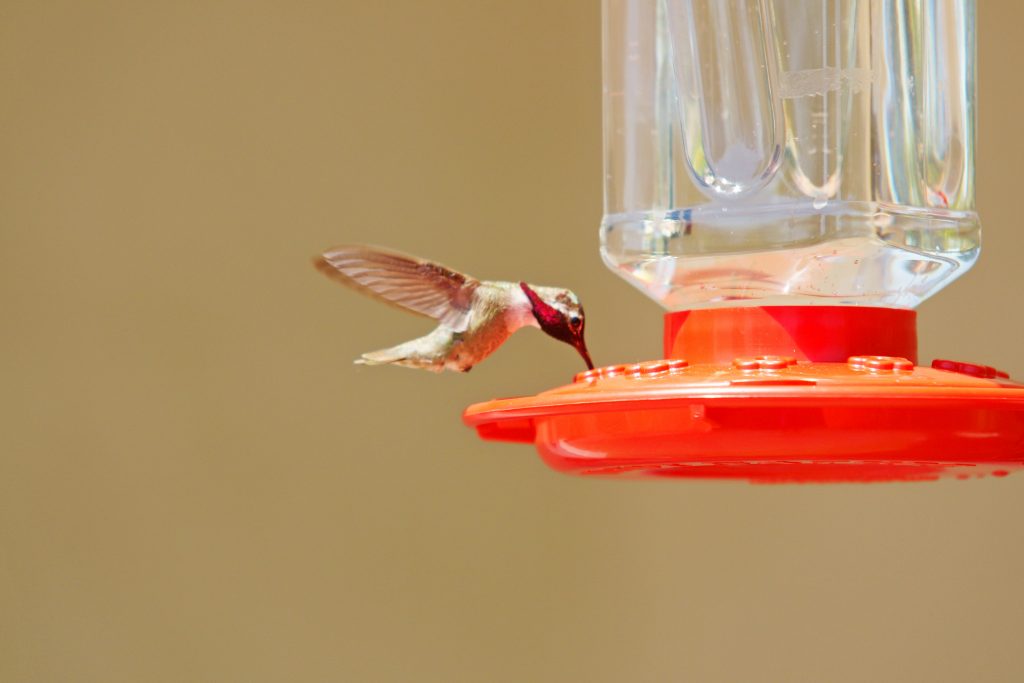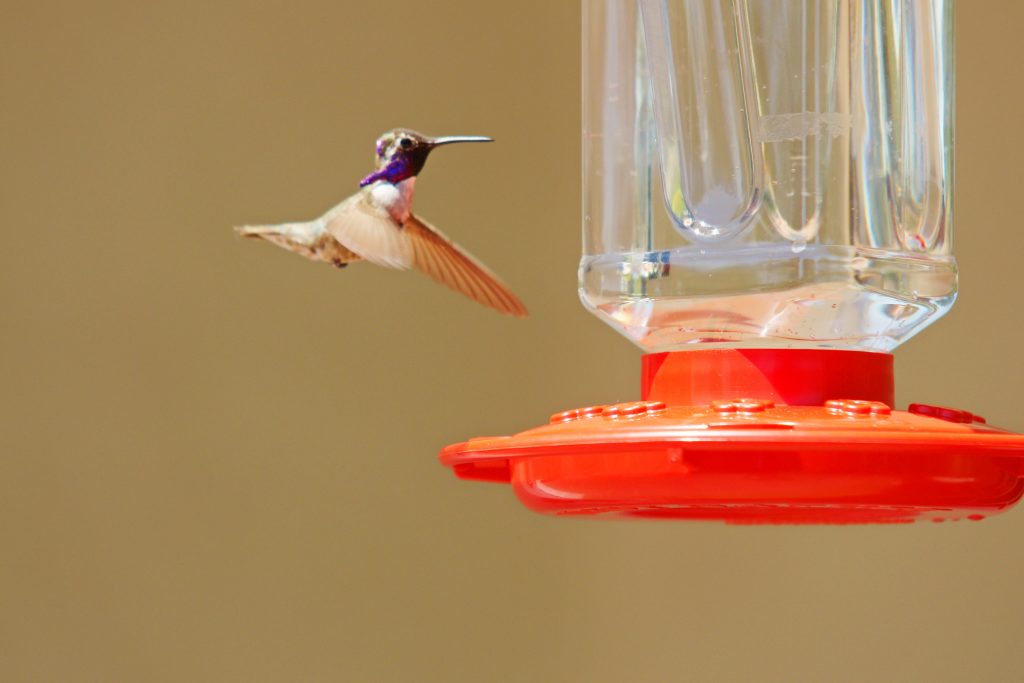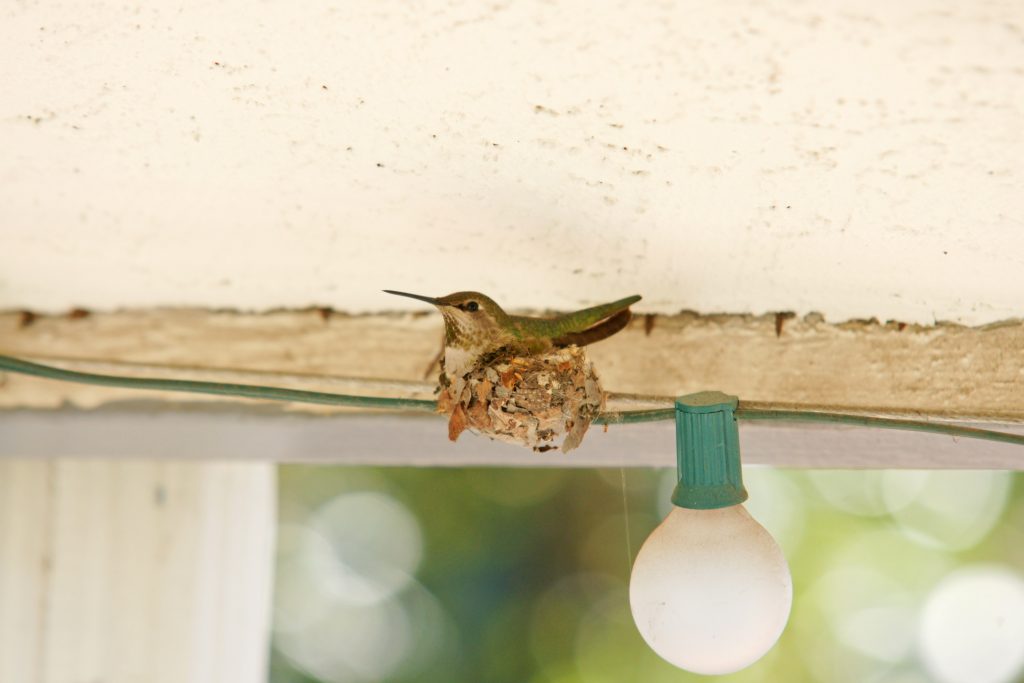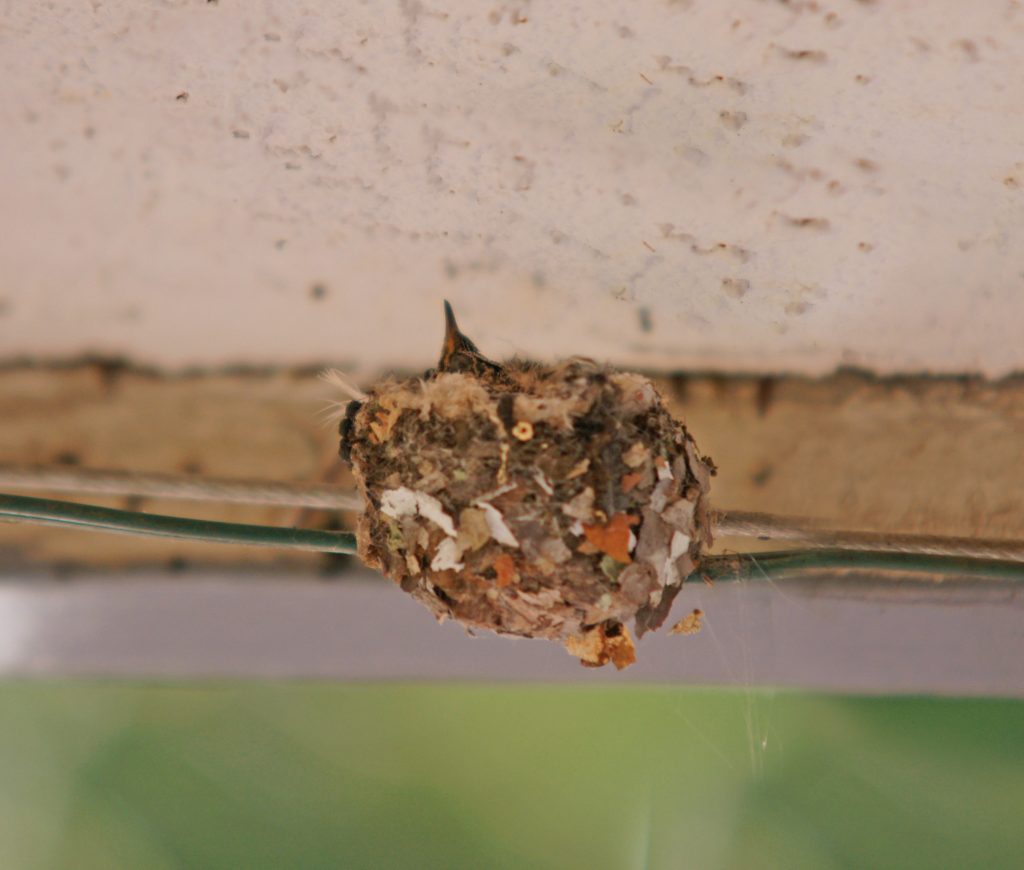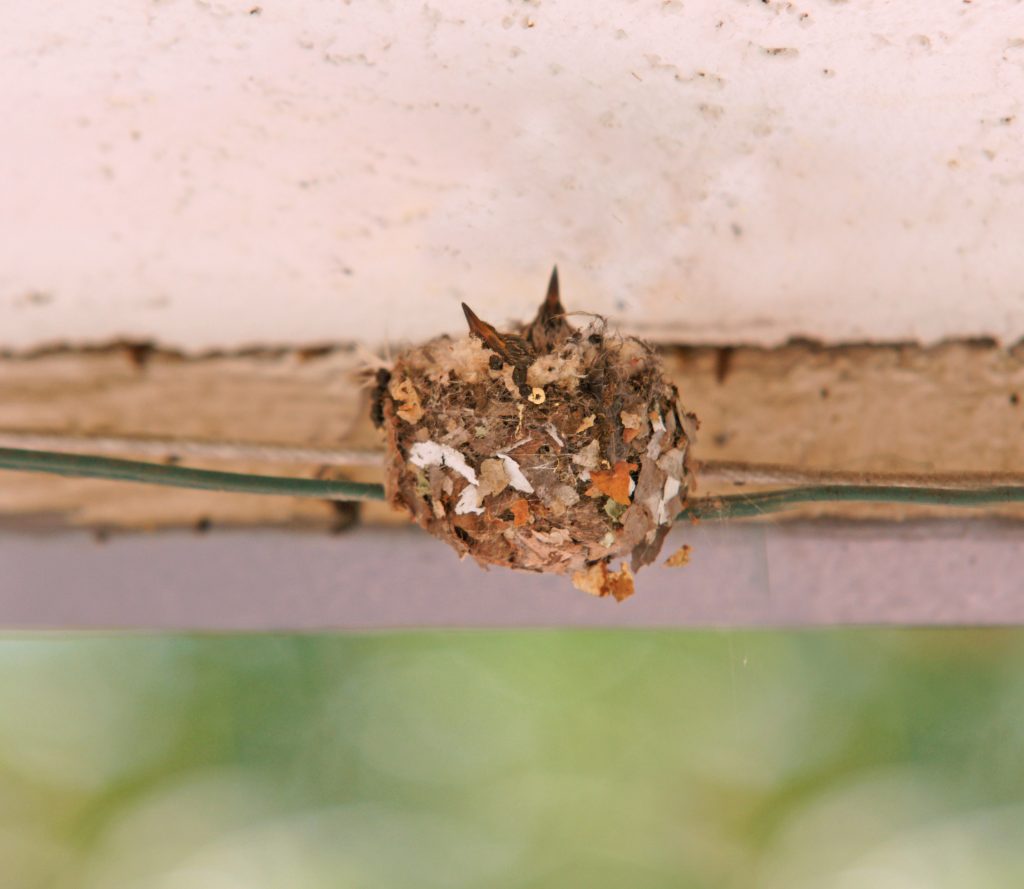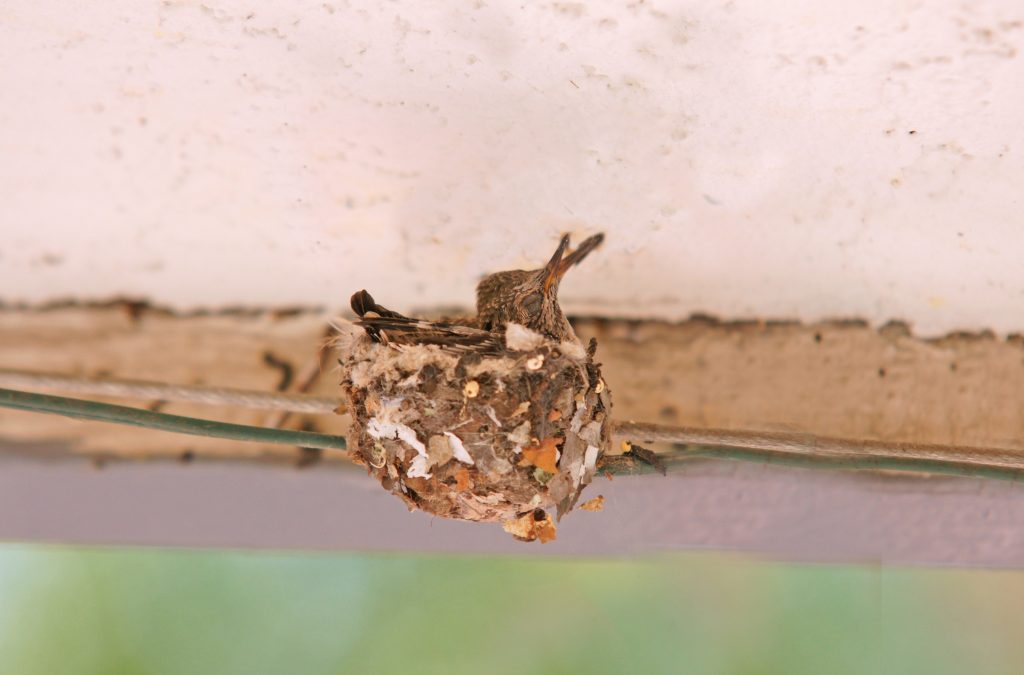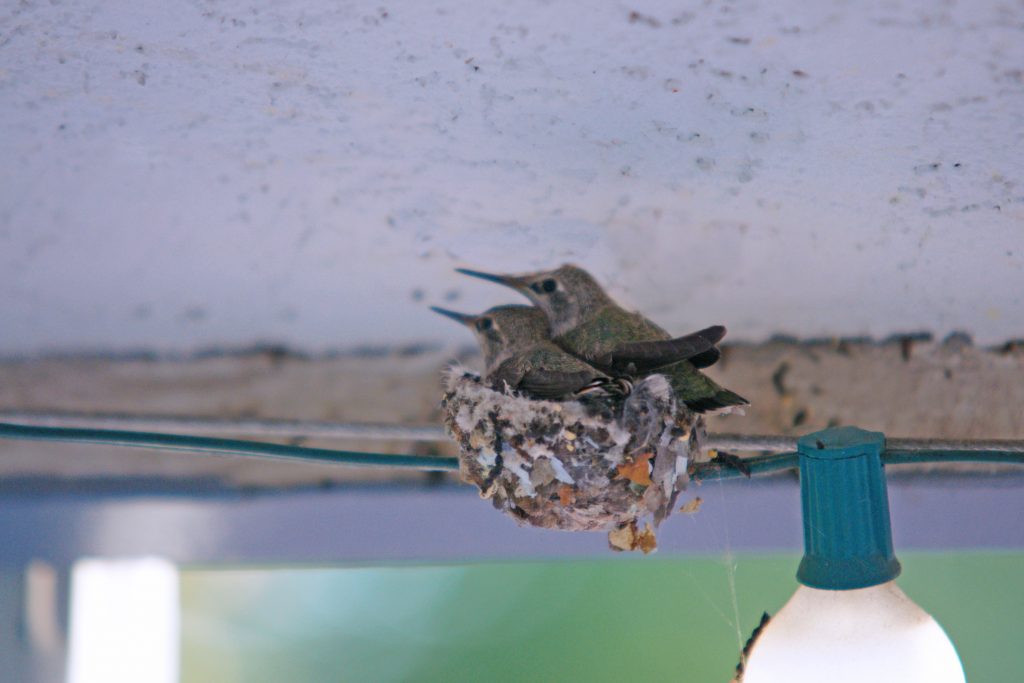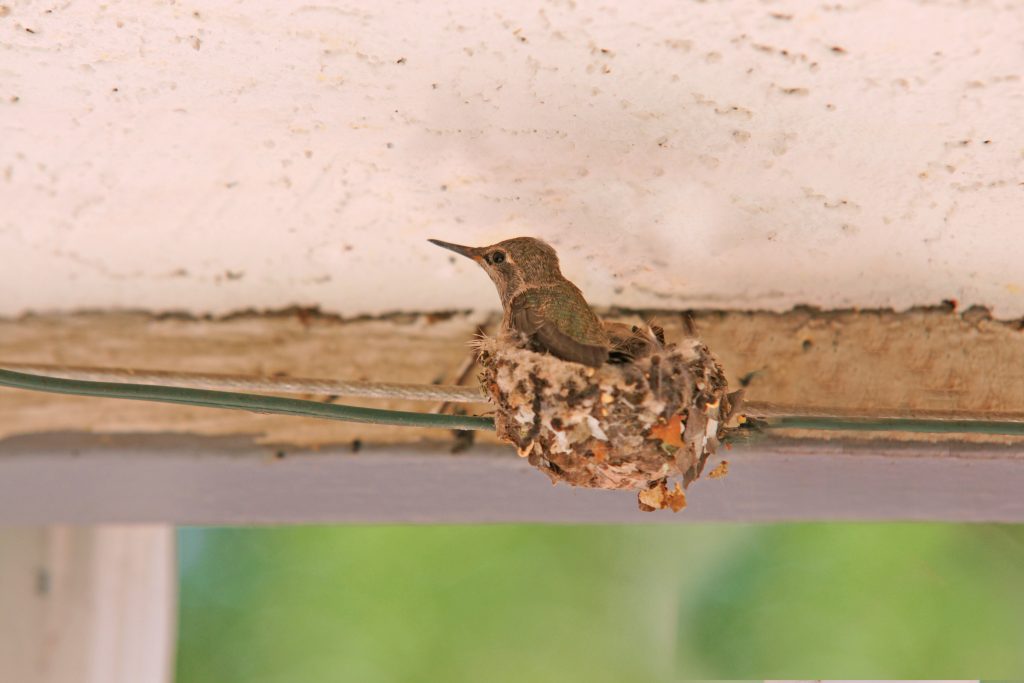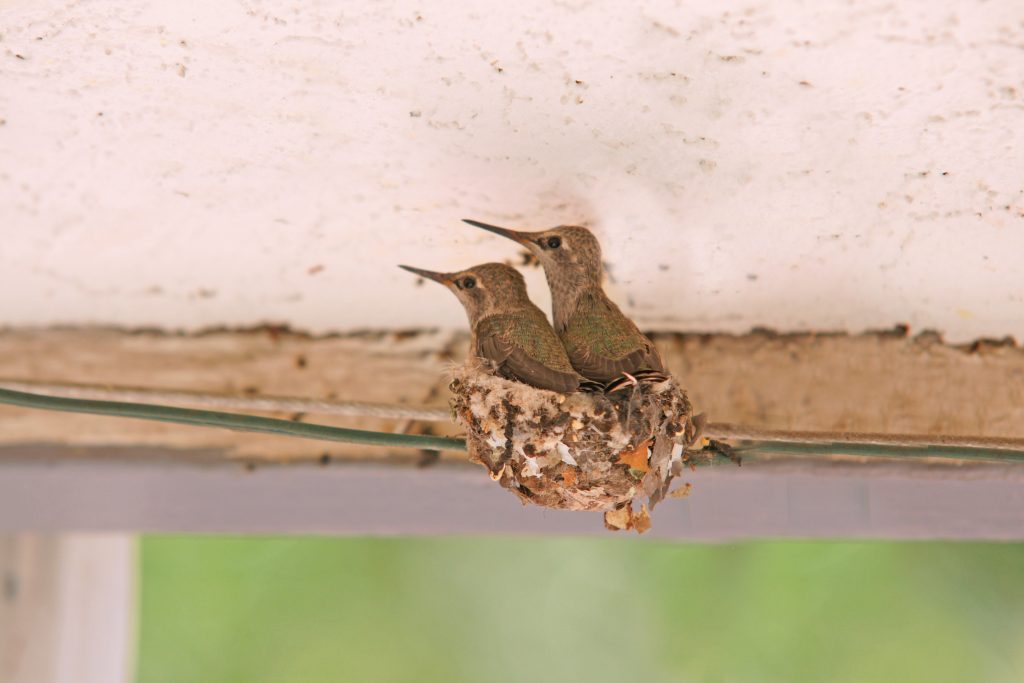Birds are cool.
First of all, they have ZW sex-determination chromosomes, rather than XY, and the ovum determines the sex of the offspring. The males have the ZZ chromosome (the larger one with more genes), and the females have the ZW chromosome.
Second, and more importantly, like Superman, they can fly.
So let’s take a look at Trochilidea, also known as Hummingbirds, a common bird found in southern California.
This appears to be a female or juvenile male calliope hummingbird.
If you watch carefully, you will see that hummingbirds will perch. What they are thinking when they perch is known only to them.
With a fast camera lens, it is easy to take photographs of hummingbirds in flight because they hover.
According to science: Hummingbirds are highly sensitive to stimuli in their visual fields, responding to even minimal motion in any direction by reorienting themselves in midflight. Hummingbirds’ visual sensitivity allows them to precisely hover in place while in complex and dynamic natural environments, functions enabled by the lentiform nucleus which is tuned to fast-pattern velocities, enabling highly tuned control and collision avoidance during forward flight.
When hummingbirds hover, their wings curve to control movement.
You can see in this photograph that the tail can be brought forward to aid in stabilizing the bird while hovering.
no images were found
This collection of photographs shows hummingbirds at a feeder, illustrating the various ways the approach and feed.
Hummingbirds, being small, can perch on tree leaves.
When the light is right, you can get an idea of the fragility of these tiny birds.
Just to the left of center you can see a hummingbird flying towards the camera. Notice that the bird is horizontal to the ground when flying, contrasted with vertical when hovering.
It seems strange to me, but apparently hummingbirds watch other hummingbirds as they make their landing approach.
According to science: During evolution, hummingbirds have adapted to the navigational needs of visual processing while in rapid flight or hovering by development of an exceptionally dense array of retinal neurons allowing for increased spatial resolution in the lateral and frontal visual fields. Morphological studies showed that neuronal hypertrophy, relatively the largest in any bird, exists in a brain region called the pretectal nucleus lentiformis mesencephali (or nucleus of the optic tract in mammals) responsible for refining dynamic visual processing while hovering and during rapid flight. The enlargement of this brain region responsible for visual processing indicates enhanced ability for perception and processing of fast-moving visual stimuli which hummingbirds encounter during rapid forward flight, insect foraging, competitive interactions, and high-speed courtship.
From my observations, hummingbirds tolerate other hummingbirds fairly will, although I have seen males sparring with each other.
It is not uncommon to see a hummingbird remain stationary for short periods of time. I don’t know why, but I suppose, like any other critter, they are just resting.
Hummingbirds do not need to perch in order to feed — which is obvious, given that they normally eat nectar from flowers.
According to science: During turbulent airflow conditions created experimentally in a wind tunnel, hummingbirds exhibit stable head positions and orientation when they hover at a feeder. When wind gusts from the side, hummingbirds compensate by increasing the amplitude of their wing strokes plane angle and by varying the orientation and enlarging the collective surface area of their tail feathers into the shape of a fan. While hovering, the visual system of a hummingbird is able to separate apparent motion caused by the movement of the hummingbird itself from motions caused by external sources, such as an approaching predator. In natural settings full of highly complex background motion, hummingbirds are able to precisely hover in place by rapid coordination of vision with body position.
I expect that other hummingbirds completely understand hummingbird body language, but they are quite inscrutable to me.
They Grow Up So Fast
One day, to our surprise, we see a tiny nest with a tiny bird sitting in it.
Note that the hummingbird is relative used to us and that I am using a zoom lens to ensure I don’t disturb her.
According to science: Many hummingbird species use spider silk and lichen to bind the nest material together and secure the structure. The unique properties of the silk allow the nest to expand as the young hummingbirds grow. Two white eggs are laid, which despite being the smallest of all bird eggs, are in fact large relative to the adult hummingbird’s size.
We watch the nest, day after day, careful to never get too close.
One day, to our delight, we see a tiny bill protruding from the nest. We are godparents!
We watch, and discover mama hummingbird has twin babies.
They grow at an astounding rate, seemingly getting bigger in front of our eyes.
In just a few days, our babies are almost full grown and ready to leave the nest.
Then one day, we see only one. Soon, she, too, is gone.
They are gone now, but we still cherish the fun of watching them grow from tiny babies into tiny adults.
We hope you enjoyed our adventures with hummingbirds. If you are lucky enough to live in hummingbird range, perhaps you can put out a feeder or cultivate hummingbird-friendly plants so that you, too, can cherish lovely birds.
awa Travels Tip: Everyone once in a while, pause for a moment to enjoy this most tiniest of birds. “Most elegantly finished in all parts, [the hummingbird] is a miniature work of our Great Parent, who seems to have formed it the smallest, and at the same time the most beautiful of the winged species.” J. Hector St. John de Crevecoeur

